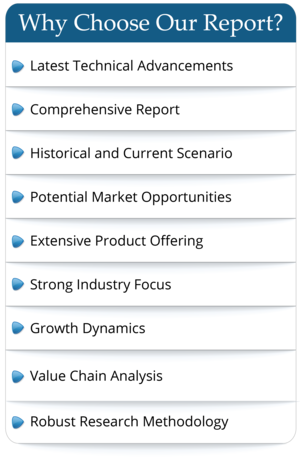Global Sebacic Acid and its Derivatives Market Size, Share and Industry Analysis by Regions, Countries, Types, and Applications, Forecast to 2028
SKU ID : Maia-24275718 | Publishing Date : 12-Jul-2023 | No. of pages : 100
The Sebacic Acid and its Derivatives market report covers sufficient and comprehensive data on market introduction, segmentations, status and trends, opportunities and challenges, industry chain, competitive analysis, company profiles, and trade statistics, etc. It provides in-depth and all-scale analysis of each segment of types, applications, players, 5 major regions and sub-division of major countries, and sometimes end user, channel, technology, as well as other information individually tailored before order confirmation.
Meticulous research and analysis were conducted during the preparation process of the report. The qualitative and quantitative data were gained and verified through primary and secondary sources, which include but not limited to Magazines, Press Releases, Paid Databases, Maia Data Center, National Customs, Annual Reports, Public Databases, Expert interviews, etc. Besides, primary sources include extensive interviews of key opinion leaders and industry experts such as experienced front-line staff, directors, CEOs, and marketing executives, downstream distributors, as well as end-clients.
In this report, the historical period starts from 2018 to 2022, and the forecast period ranges from 2023 to 2028. The facts and data are demonstrated by tables, graphs, pie charts, and other pictorial representations, which enhances the effective visual representation and decision-making capabilities for business strategy.
Key Companies in the global Sebacic Acid and its Derivatives market covered in Chapter 4:
Cap chem
Verdezyne
Arkema
Croda International
Santa Cruz Biotechnology
Wincom
BASF
Inolex Incorporation
In Chapter 12 and Chapter 14.1, on the basis of types, the Sebacic Acid and its Derivatives market from 2018 to 2028 is primarily split into:
Sebacic Acid
Azelaic Acid
Dioctyl sebacate
Dibutyl sebacate
Dimethyl sebacate
Other
In Chapter 13 and Chapter 14.2, on the basis of the Downstream Industry, the Sebacic Acid and its Derivatives market from 2018 to 2028 covers:
Nylon
Plasticizer
Lubricant
Others
Geographically, the detailed analysis of consumption, revenue, market share and growth rate, history and forecast (2018-2028) of the following regions are covered in Chapters 6, 7, 8, 9, 10, 11, 15:
North America (United States, Canada, Mexico)
Europe (Germany, United Kingdom, France, Italy, Spain)
Asia Pacific (China, Japan, South Korea, India, Southeast Asia)
South America (Brazil, Argentina)
Middle East & Africa (Saudi Arabia, UAE, South Africa)
Outline:
Chapter 1 begins with the Sebacic Acid and its Derivatives market scope and definition, product segment introduction, global overall market size, as well as market dynamics scenarios such as opportunities, challenges, and industry development trends under inflation. It offers a high-level view of the current state of the Sebacic Acid and its Derivatives market and its likely evolution in the short to mid-term and long term.
Chapter 2 provides Sebacic Acid and its Derivatives industry chain analysis, covering raw materials analysis, cost structure, price estimate, and forecast, along with price-impacting factors, downstream channels, and major customers. It aims to help readers to grab insights into product upstream, midstream, and downstream fields.
Chapter 3 depicts Sebacic Acid and its Derivatives industry competitive analysis regarding market concentration rate, saturation rate, feasibility analysis from new entrants, as well as substitute's status and trends. It indicates the developing space and prospects of the current industry.
Chapter 4 analyzes extensive company profiles, comprising company basic info, product or service profiles, and sales, price, value, gross, and gross margin 2018-2023. It incorporates the Sebacic Acid and its Derivatives market ranking, benchmarks, and company business portfolio.
Chapter 5 presents trade statistics of import and export volume from 2018-2023, demonstrating domestic and international market comparisons in specific countries.
Chapters 6-10 highlight Sebacic Acid and its Derivatives market status at the regional and country levels, including 5 major regions of North America, Europe, Asia Pacific, the Middle East and Africa, and Latin America. The region and country list in the sample is only for reference, and it can be adjusted as required.
Chapter 11 involves geographical market figures of sales, value, market share, and growth rate. Economic, social, environmental, technological, and political factors have been taken into consideration while assessing the growth of each specific region.
Chapters 12-13 evaluate the Sebacic Acid and its Derivatives market based on different types and applications. It focuses on sales and value of 2018-2023 from both vertical and horizontal perspectives.
Chapters 14-15 elaborate on the Sebacic Acid and its Derivatives market forecast data from 2023-2028, segmented by types and applications, regions, and major countries, helping readers to know future aspects and growth trends.
Chapter 16 ends with an elaboration of data sources and research methodology. All possible parameters that affect the markets covered in this research study have been accounted for, viewed in extensive detail, verified through primary research, and analyzed to get the final quantitative and qualitative data.
Years considered for this report:
Historical Years:
2018-2022Base Year:
2022Estimated Year:
2023Forecast Period:
2023-2028Frequently Asked Questions
- By product type
- By End User/Applications
- By Technology
- By Region

 Pre-order Enquiry
Pre-order Enquiry Request Free Sample
Request Free Sample


 Request Sample
Request Sample Request Discount
Request Discount










